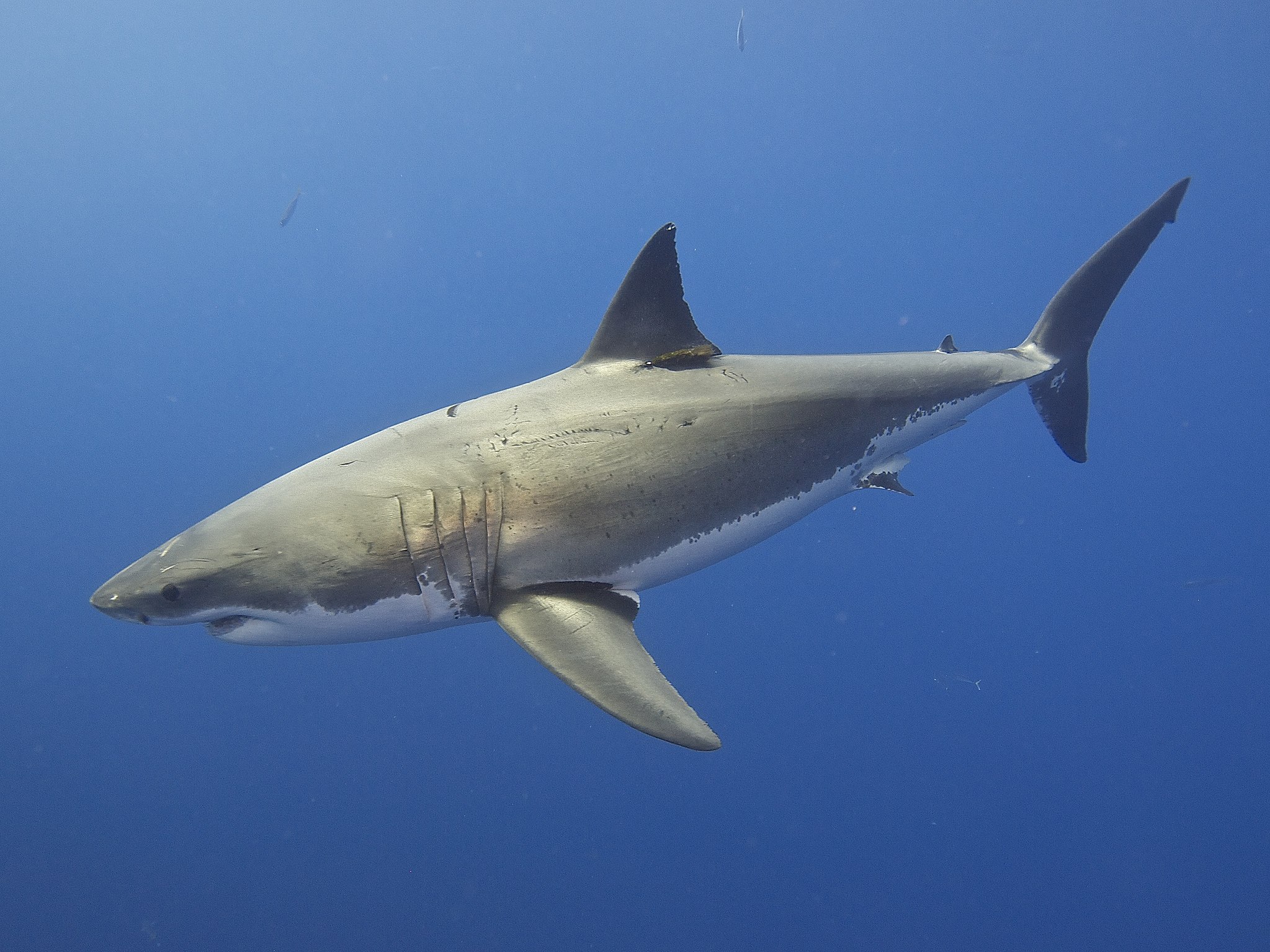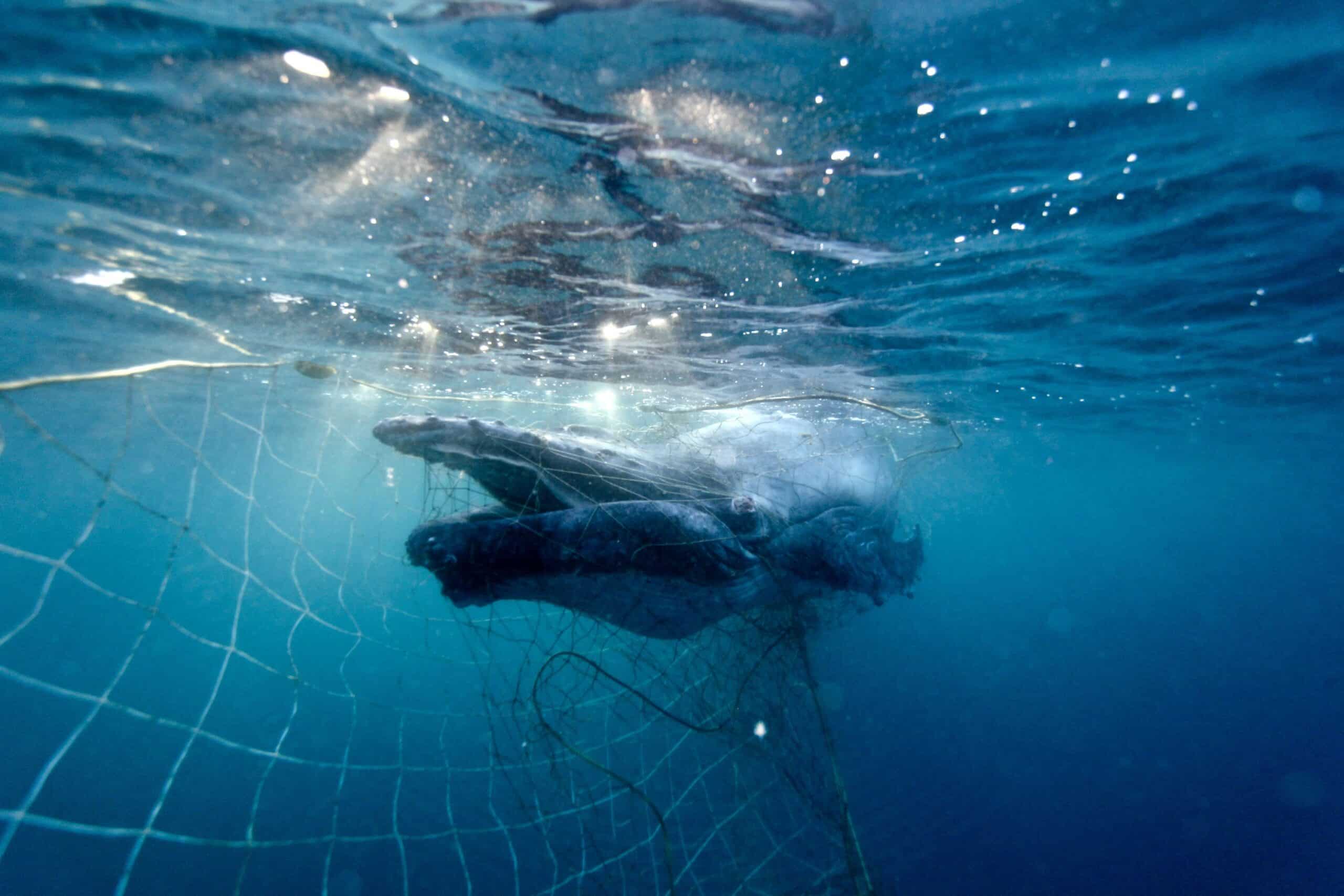Research shows that Australia’s great white sharks are highly related to each other and may consist of fewer than 500 breeding animals. SYDNEY, 24 June 2025: Latest research has found Australia’s great white shark population is much smaller than expected, increasing their vulnerability to further population threats. The population...
The teeth of the grey nurse shark give them a frightening appearance that betrays their benign nature, making them the popular subject of a growing ecotourism and diving industry. Reaching lengths of over 3 m, no human fatalities have ever been attributed to grey nurse sharks, and bites have only resulted after human provocation. Despite their placidity, past sport and spearfishing has pushed the east coast Australian population of grey nurse sharks to the brink of extinction, while commercial fishing has caused population declines throughout the rest of the world – earning them a Vulnerable listing on the IUCN Redlist. Recognising the need for conservation in Australia, small pockets of critical habitats off the NSW coast have been protected since the early 2000s. But now, one of those protections are under threat as the Bateman’s Bay Marine Park critical habitat has been opened to fishing without legislative change or public consultation.
Grey nurse sharks are nocturnal feeders, hunting by stealth and spending their days sheltering in overhangs, caves, canyons, reefs, and shipwrecks, often at shallow depths. Their prey consists of mostly demersal fish, and can also include skates, rays, and other sharks.
In Australia, grey nurse sharks mate at higher, southern latitudes from August to October, then migrate north to gestate in warmer waters. The females then return south to give birth in cooler waters, and migrate back north to submerged rocks, canyons and caves.
A female can carry as many as 50 fertilised embryos, and once the largest shark pup reaches 10 cm, it begins to consume the others in-utero – a peculiarity known as “adelphophagy” or inter-uterine cannibalism! At birth, what are usually two surviving grey nurse pups measure about 1m and are fully developed and independent.
With a gestation period of 8-12 months and a birth occurring every second or third year, female grey nurse sharks give birth to an average of less than 1 pup per year, the lowest reproductive rate of any shark species (Last and Stevens 2009).
The life history of the grey nurse shark has made it particularly vulnerable to the threat of extinction. They are long-lived (up to 25+ years), mature late (6–8 years), have a low fecundity (maximum 2 live young biennially), have very specific habitat requirements, have a limited inshore distribution, and small population size. A precipitous decline in grey nurse shark populations came in the 1950s and 1960s, with the misconception that they were ‘man-eaters’. Sadly, their placid nature made them easy targets.
Fortunately, before the sharks were driven to the absolute brink, conservation interests prevailed when the grey nurse shark was the first protected shark in the world when it was placed under New South Wales legislation in 1984. Following nominations by HSI, the east and west coast populations have been federally protected under the EPBC Act, with the east coast listed in 2001 as critically endangered, and the west coast population listed as vulnerable in 2014.
Current major threats to grey nurse sharks include capture in NSW and QLD shark control programs, as well as recreational fishing bycatch and through the direct or indirect ingestion of fishhooks. This frequently causes septicaemia in the sharks, leading to a decline in or cessation of reproductive ability, emaciation and death (Otway, 2015).
HSI was a member of a team that produced the first grey nurse shark Recovery Plan in 2002, (with a second iteration coming in 2014) along with Federal and State governments to arrest the population decline of grey nurse sharks, and with hope to facilitate population recovery. Despite these efforts, an independent 2019 review commissioned by HSI and Australian Marine Conservation Society of the plan suggested that while most recovery actions have progressed or been completed, there’s been no evidence of that translating into population recovery (Rayns, 2019).
Despite federal protection and implementation of recovery plans, the east coast population was recently estimated between 956 and 3078 individuals (NESP News, 2018).
East Australian grey nurse sharks are known to congregate at 19 sites along the NSW and south QLD coast (Recovery Plan 2014). As a part of the Grey Nurse Shark Recovery Plan, these sites have been designated as critical habitat and protected from fishing. Long-time supporters will recall significant advocacy efforts from HSI to solidify these protections in the early 2000s. Many of you would have assisted this effort by writing to Fisheries and Environment Ministers of the time.
While most of these critical habitats have remained closed to fishing, Bateman’s Marine Park in southern NSW has been subject to a troubling recent announcement made by the New South Wales government. Late last year (2019), an “amnesty of prosecution” was announced for recreational fishing within the critical habitats, essentially inviting anglers into the protected areas with the guarantee that there would be no penalties. This is a disturbing and significantly detrimental decision to the grey nurse sharks that congregate in the Marine Park, but also sets a dangerous precedent if it were to be repeated elsewhere on the NSW coast. A Marine Park’s protection was stolen away without any change to legislation or public consultation process.
If we are to retain this magnificent species, and halt its march toward extinction, we need to take the protection of its critical habitat sites much more seriously. Direct and indirect fishhook ingestion has now become the primary threat to this seriously imperilled species.
We can stand for the grey nurse, and we are. Tell the government that you do not stand for unapproved repeals of marine protection in NSW, and that grey nurse shark conservation must be a high priority. If you want to add your voice in support of the grey nurse, sign and share the petition here.
A marine ecologist specialising in conservation, research and outreach, Lawrence has spent years working with wildlife, the ocean and the public to engender sustainable relationships between them. He has worked as a field biologist, environmental consultant, naturalist and project coordinator with a BA from the University of San Diego, and an MSc from James Cook University. Lawrence’s work at HSI is currently focused on shark welfare and protection, specifically in regards to culling and control programs, overexploitation, and international protection.
References
(2014). Recovery Plan for the Grey Nurse Shark (Carcharias taurus). D. o. t. Environment, Commonwealth of Australia.
Nicholas M Otway, C. J. A. B., Robert G Harcourt (2004). “Estimating the rate of quasi-extinction of the Australian grey nurse shark (Carcharias taurus) population using deterministic age- and stage-classified models.” Biological Conservation 119(3): 341-350.
Otway, N. M. (2015). “Serum biochemical reference intervals for free-living Sand Tiger sharks (Carcharias taurus) from east Australian waters.” Veterinary Clinical Pathology 44(2): 262-274.
Peter R. Last, J. D. S. (2009). Sharks and Rays of Australia. Collingwood VIC, Australia, CSIRO Publishing.
Rayns, N. (2019). Review of Recovery Planning for Threatened Sharks: Status, Analysis & Future Directions, Humane Society International and Australian Marine Conservation Society.
Tim P. Lynch, R. H., Graham Edgar, Neville Barrett (2013). “Conservation of the Critically Endangered Eastern Australian Population of the Grey Nurse Shark (Carcharias taurus) Through Cross-Jurisdictional Management of a Network of Marine-Protected Areas.” Environmental Management.


